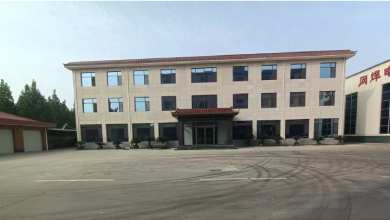-
 Afrikaans
Afrikaans -
 Albanian
Albanian -
 Amharic
Amharic -
 Arabic
Arabic -
 Armenian
Armenian -
 Azerbaijani
Azerbaijani -
 Basque
Basque -
 Belarusian
Belarusian -
 Bengali
Bengali -
 Bosnian
Bosnian -
 Bulgarian
Bulgarian -
 Catalan
Catalan -
 Cebuano
Cebuano -
 China
China -
 Corsican
Corsican -
 Croatian
Croatian -
 Czech
Czech -
 Danish
Danish -
 Dutch
Dutch -
 English
English -
 Esperanto
Esperanto -
 Estonian
Estonian -
 Finnish
Finnish -
 French
French -
 Frisian
Frisian -
 Galician
Galician -
 Georgian
Georgian -
 German
German -
 Greek
Greek -
 Gujarati
Gujarati -
 Haitian Creole
Haitian Creole -
 hausa
hausa -
 hawaiian
hawaiian -
 Hebrew
Hebrew -
 Hindi
Hindi -
 Miao
Miao -
 Hungarian
Hungarian -
 Icelandic
Icelandic -
 igbo
igbo -
 Indonesian
Indonesian -
 irish
irish -
 Italian
Italian -
 Japanese
Japanese -
 Javanese
Javanese -
 Kannada
Kannada -
 kazakh
kazakh -
 Khmer
Khmer -
 Rwandese
Rwandese -
 Korean
Korean -
 Kurdish
Kurdish -
 Kyrgyz
Kyrgyz -
 Lao
Lao -
 Latin
Latin -
 Latvian
Latvian -
 Lithuanian
Lithuanian -
 Luxembourgish
Luxembourgish -
 Macedonian
Macedonian -
 Malgashi
Malgashi -
 Malay
Malay -
 Malayalam
Malayalam -
 Maltese
Maltese -
 Maori
Maori -
 Marathi
Marathi -
 Mongolian
Mongolian -
 Myanmar
Myanmar -
 Nepali
Nepali -
 Norwegian
Norwegian -
 Norwegian
Norwegian -
 Occitan
Occitan -
 Pashto
Pashto -
 Persian
Persian -
 Polish
Polish -
 Portuguese
Portuguese -
 Punjabi
Punjabi -
 Romanian
Romanian -
 Russian
Russian -
 Samoan
Samoan -
 Scottish Gaelic
Scottish Gaelic -
 Serbian
Serbian -
 Sesotho
Sesotho -
 Shona
Shona -
 Sindhi
Sindhi -
 Sinhala
Sinhala -
 Slovak
Slovak -
 Slovenian
Slovenian -
 Somali
Somali -
 Spanish
Spanish -
 Sundanese
Sundanese -
 Swahili
Swahili -
 Swedish
Swedish -
 Tagalog
Tagalog -
 Tajik
Tajik -
 Tamil
Tamil -
 Tatar
Tatar -
 Telugu
Telugu -
 Thai
Thai -
 Turkish
Turkish -
 Turkmen
Turkmen -
 Ukrainian
Ukrainian -
 Urdu
Urdu -
 Uighur
Uighur -
 Uzbek
Uzbek -
 Vietnamese
Vietnamese -
 Welsh
Welsh -
 Bantu
Bantu -
 Yiddish
Yiddish -
 Yoruba
Yoruba -
 Zulu
Zulu
Innovative Applications and Benefits of Steel Rope Mesh in Modern Construction and Design Projects
The Versatility and Strength of Steel Rope Mesh
Steel rope mesh, a remarkable construction material characterized by its unique design and strength, has garnered increasing attention across various industries. Its application ranges from architecture and engineering to agriculture and safety, all of which highlight its versatility and durability.
At its core, steel rope mesh consists of interconnected steel wires that form a flexible yet strong network. The weaving pattern allows for a combination of tensile strength and flexibility, making it an ideal choice for various applications. One of the foremost advantages of steel rope mesh is its exceptional load-bearing capacity. This inherent strength makes it suited for environments where structural integrity is paramount, such as in the design of facades, balustrades, and safety barriers.
In construction and architecture, steel rope mesh is often used as a cladding material. It can create aesthetically pleasing facades while ensuring safety and stability. The mesh allows for light transmission and air circulation, contributing to energy efficiency in buildings. Moreover, its open structure can add an artistic element to architectural designs, allowing for innovative uses in public spaces and private residences alike. Architects appreciate the blend of beauty and practicality that steel rope mesh provides, leading to its growing popularity in modern construction.
In the realm of agriculture, steel rope mesh has proven invaluable. Farmers and land managers utilize it for fencing, trellising, and bird netting, enhancing their operational efficiency. The durable nature of steel rope ensures longevity, reducing the need for frequent replacements. Its flexibility allows it to adapt to varied terrains and to secure crops without hindering growth. This feature is especially critical in organic farming, where maintaining the integrity of ecosystems is essential.
steel rope mesh

Steel rope mesh is not only functional but also addresses safety concerns in many environments. Its robust design is especially useful in wildlife management, where it can serve as an effective containment system for animals, preventing escape while ensuring their safety. In urban settings, it acts as a protective barrier, safeguarding pedestrians and property from potential hazards. The high visibility offered by the mesh also adds an additional layer of safety, making it a preferred choice in busy areas.
Another remarkable feature of steel rope mesh is its resistance to environmental factors. Unlike traditional fencing materials, steel mesh is less prone to rust and corrosion when properly treated. This characteristic ensures longevity and reduces maintenance costs, making it economically advantageous for large-scale projects and installations.
Moreover, steel rope mesh is eco-friendly, as it is often made from recycled materials. Its sustainability factor makes it increasingly attractive to environmentally conscious businesses and consumers, aligning with global efforts to reduce carbon footprints.
As industries continue to seek innovative solutions to meet their needs, the role of steel rope mesh is likely to expand. Its combination of strength, flexibility, aesthetic appeal, and sustainability positions it as a go-to material across multiple sectors. Whether used in high-rise buildings, agricultural fields, or safety features in public spaces, steel rope mesh stands out as a testament to the synthesis of function and design in modern materials.
In conclusion, steel rope mesh is more than just a construction material; it embodies a solution that meets diverse needs in a range of industries. Its strength, flexibility, and environmental benefits highlight its versatility and position it as a vital component in contemporary design and construction. As we move towards a more sustainable future, the role of steel rope mesh is poised to become even more significant, reinforcing its status as a leading choice for architects, engineers, and agriculturalists alike.
-
Shipping Plastic Bags for Every NeedNewsJul.24,2025
-
Safety Netting: Your Shield in ConstructionNewsJul.24,2025
-
Plastic Mesh Netting for Everyday UseNewsJul.24,2025
-
Nylon Netting for Every UseNewsJul.24,2025
-
Mesh Breeder Box for Fish TanksNewsJul.24,2025
-
Expanded Steel Mesh Offers Durable VersatilityNewsJul.24,2025











